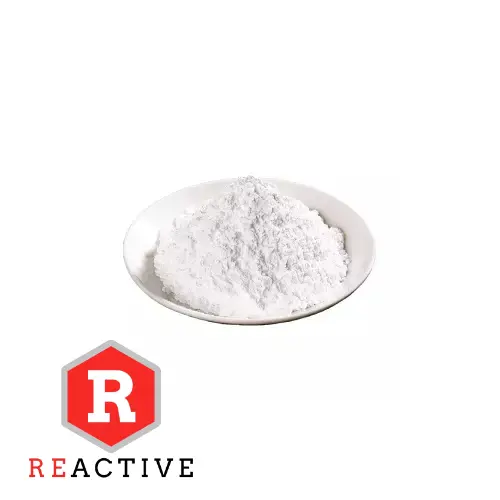Magnesiumoxid zur Verwendung im metallurgischen Bergbau
Hochreines, leicht gebranntes Magnesiumoxid ist mäßig reaktiv und wird gleichmäßig verbrannt, um eine höhere Ausbeute wertvoller Metalle aus der Erzgewinnung wie Kobalt, Nickel und Kupfer aus sauren Laugelösungen zu ermöglichen.
Leicht gebranntes Magnesiumoxid kann die MgO-Nutzungseffizienz verbessern und die Niederschlagsqualität oder Ausbeute des Metalls erhöhen, wodurch leicht gebranntes Magnesiumoxid in der Hydrometallurgie eine bessere Leistung zeigt als natürlich vorkommende, abgebaute Magnesiaprodukte, die eine geringere MgO-Reinheit und eine langsamere, ungleichmäßige Reaktivität aufweisen.
Magnesiumoxid (MgO) wird bei der Raffination von Nickel und Kobalt auf verschiedene Weise verwendet:
- Neutralisierung: MgO ist eine starke Base, die saure Lösungen neutralisieren kann. Dies ist nützlich, um den pH-Wert von Nickel- und Kobaltlaugen zu erhöhen, wodurch Verunreinigungen als Hydroxide ausgefällt werden können. Dieser Prozess wird als Hydrometallurgie bezeichnet.
- Fällung: MgO kann auch verwendet werden, um Nickel und Kobalt direkt als Hydroxide auszufällen. Dies geschieht durch Zugabe von MgO zu einer Lösung, die Nickel- und Kobaltionen enthält. Das MgO reagiert mit dem Wasser in der Lösung zu Magnesiumhydroxid (Mg(OH)2), das dann mit den Nickel- und Kobaltionen zu Nickel- und Kobalthydroxiden reagiert.
- Filtration: MgO kann auch als Filterhilfsmittel verwendet werden. Es wird Schlämmen aus Nickel- und Kobalthydroxiden zugesetzt, damit sie leichter gefiltert werden können. Die MgO-Partikel fangen Verunreinigungen ab und verhindern, dass diese den Filter verstopfen.
- Adsorption: MgO kann auch verwendet werden, um Verunreinigungen aus Nickel- und Kobaltlösungen zu adsorbieren. Dabei wird die Lösung durch ein Bett aus MgO-Partikeln geleitet. Die Verunreinigungen werden von der Oberfläche der MgO-Partikel angezogen und aus der Lösung entfernt.
Die spezifische Rolle von MgO bei der Raffination von Nickel und Kobalt hängt vom jeweiligen Raffinationsprozess ab. Im Allgemeinen ist MgO jedoch ein vielseitiges und wirksames Reagenz, mit dem Verunreinigungen aus Nickel- und Kobaltlösungen entfernt und hochreine Nickel- und Kobaltprodukte hergestellt werden können.
Hier einige konkrete Beispiele für die Verwendung von MgO bei der Raffination von Nickel und Kobalt:
- Beim Bayer-Verfahren wird MgO zur Neutralisierung der sauren Lauge verwendet. Dadurch werden Verunreinigungen als Hydroxide abgeschieden, beispielsweise Eisenhydroxid und Aluminiumhydroxid.
- Beim Sherritt-Verfahren wird MgO verwendet, um Nickel und Kobalt als Hydroxide aus ammoniakalischen Lösungen auszufällen.
- Beim Caron-Verfahren wird MgO verwendet, um Verunreinigungen aus Nickel- und Kobaltlösungen zu adsorbieren.
- Beim elektrolytischen Gewinnungsprozess wird MgO als Filterhilfsmittel verwendet, um Nickel und Kobalt von der Elektrolytlösung zu trennen.
MgO ist ein wertvolles Reagenz für die Raffination von Nickel und Kobalt. Es ist relativ günstig, leicht verfügbar und einfach zu handhaben. Es ist auch ein wirksames Reagenz zum Entfernen einer Vielzahl von Verunreinigungen aus Nickel- und Kobaltlösungen. Aus diesem Grund wird MgO in der Nickel- und Kobaltraffinationsindustrie häufig verwendet.
Hochreines, leicht gebranntes Magnesiumoxid
Tibet Mag bietet hochreines, leicht gebranntes Magnesiumoxid für den Einsatz im metallurgischen Bergbau.
Magnesiumoxid wird als Bestandteil der Zementmischung zum Herstellen luftdichter Abdichtungen beim Bohren von Brunnen verwendet. Nachdem der Zementmischung Magnesiumoxid hinzugefügt wurde, wird es hydratisiert und dehnt sich aus, wodurch eine stabile Verbindung zwischen Boden und Verrohrung gewährleistet wird.
Magnesiumoxid kann auch als Verdickungsmittel in Bohrschlämmen verwendet werden. Bohrschlämme sind komplexe Mischungen mit zahlreichen Zusatzstoffen, die die Flüssigkeitsdichte, Rheologie und den pH-Wert verändern können. Magnesia (Magnesiumoxid) wird in Bohrschlämmen verwendet, wo es als Reinigungsmittel dient, um die Reinheit des Ringraums aufrechtzuerhalten und beim Bohren freigesetzte saure Gase zu neutralisieren.
Hochreines Magnesiumoxid weist eine moderate chemische Aktivität auf und sorgt für eine schnelle Erschöpfung der Edelmetalle aus den abgebauten Erzen, wie Kobalt, Nickel und Kupfer aus Säurelaugungslösungen. Die Verwendung von synthetischem Magnesiumoxid gewährleistet eine hohe Produktionskapazität in der Hydrometallurgie im Vergleich zu abgebauten Magnesiumprodukten natürlichen Ursprungs, die eine geringere Häufigkeit und eine langsame und ungleichmäßige chemische Aktivität aufweisen.



